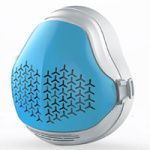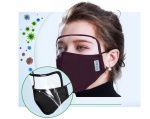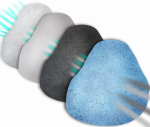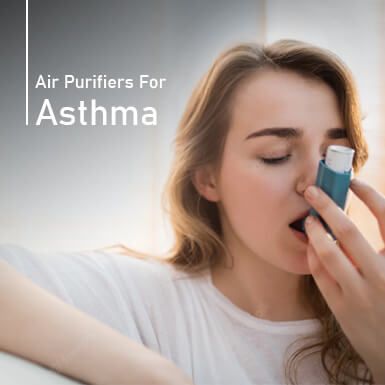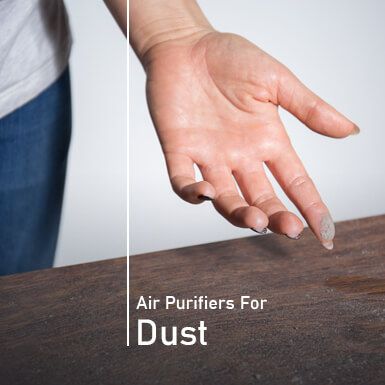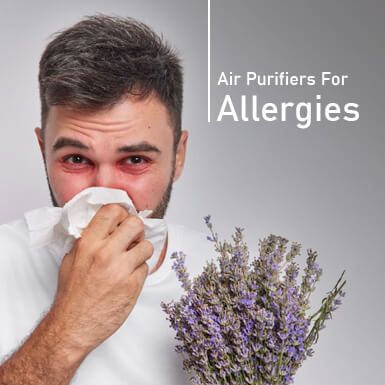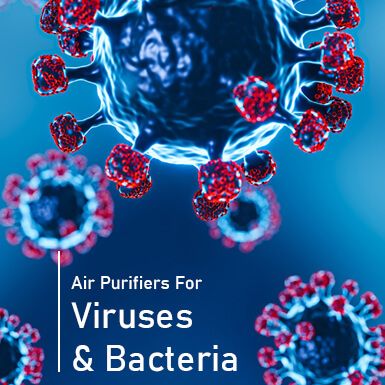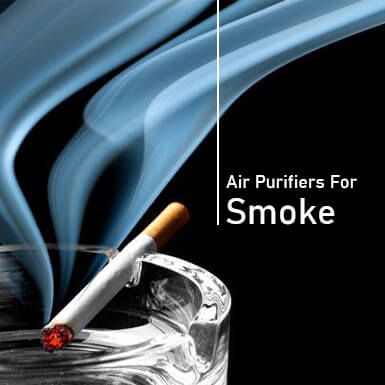The history of protective masks is a very long one. During the Bubonic Plague of the thirteenth century, French doctors invented a leather suit with a mask resembling a bird's beak to protect themselves. In the twentieth century, the “Spanish flu” epidemic led doctors to wear a bandage made of several layers of gauze. Today, we have more sophisticated—and more attractive—options.
Do your masks provide coronavirus protection?
A medical disposable mask protects against infections that can be transmitted through the respiratory system: throat, nose, nasopharynx, lungs. Such diseases include influenza, measles, rubella, chickenpox, mumps, sore throat, tuberculosis, whooping cough, and various other viral diseases, including the coronavirus.
The most common route of infection is through coughing or sneezing: germs spread up to two meters from the patient. A mask reduces the number of viral particles emitted by the host. The extent to which it protects a healthy person "on entry" is still debatable. But when washable masks are worn by everyone, they reduce the spread of infection.
How effective are breathable masks?
A mask must fit perfectly if it is going to protect against viruses. For maximum effectiveness, masks should fit snugly over the face, covering the mouth, nose, and chin. The nosepiece should neither slip nor rub against your skin. The ties or loops should secure the product and should not cause discomfort. It is good if the mask is corrugated: this ensures comfort when wearing, tightness of the product, and no contact with the lips. The wrinkles should be rolled out, and the mask should be shaped more comfortably to provide a better fit.
The mask should not be shifted to the chin or placed in a pocket and reused. Wearers should also avoid touching the fabric with their hands during use: remove the mask by the loops only or untie the ties.
How long should you wear the disposable face mask?
The mask should be changed as soon as the garment becomes wet from coughing or sneezing.
Recommended wearing time is not to exceed two hours for a normal mask and three to five hours for a reusable product treated with a special bactericide. After these spans, masks should be changed.
How to choose the best face mask?
A disposable medical mask consists of three layers: two outer layers and a filter. Some quality versions come with an extra filter (four-ply masks) and specialised masks designed for surgeons have an anti-fluid layer. There are two main types: procedural or disposable masks and specialised or surgical masks. Note also that all masks are unisex, but they come in various sizes, which should be considered carefully when selecting a mask for maximum protection.
Mask types also include:- Medical: used for patients with acute respiratory diseases and respiratory illnesses. Non-woven fabrics made from polymer fibers are used for production.
- Children's: it is important to pay attention to the size; the fabric should not be more than 140 by 80 mm. Such masks are made of hypoallergenic materials. It is desirable that the inner layer is made of natural material without dyes.
- Respirator: A rigid base allows for a snugger fit to the face. Protects the respiratory system against dust and dirt. It can be worn for up to six hours during construction and renovation work.
- A medical mask with an exhalation valve, which ensures a snug fit and is used to protect against infections and allergens.
The N95 mask in security level FFP2 is considered the most effective. It will trap 95% of particles down to 0.3 microns. It is made from durable materials. But this type of mask does not protect others from the air you breathe out.
-
- Masks & Wearables
The history of protective masks is a very long one. During the Bubonic Plague of the thirteenth century, French doctors invented a leather suit with a mask resembling a bird's beak to protect themselves. In the twentieth century, the “Spanish flu” epidemic led doctors to wear a bandage made of several layers of gauze. Today, we have more sophisticated—and more attractive—options.
Do your masks provide coronavirus protection?
A medical disposable mask protects against infections that can be transmitted through the respiratory system: throat, nose, nasopharynx, lungs. Such diseases include influenza, measles, rubella, chickenpox, mumps, sore throat, tuberculosis, whooping cough, and various other viral diseases, including the coronavirus.
The most common route of infection is through coughing or sneezing: germs spread up to two meters from the patient. A mask reduces the number of viral particles emitted by the host. The extent to which it protects a healthy person "on entry" is still debatable. But when washable masks are worn by everyone, they reduce the spread of infection.
How effective are breathable masks?
A mask must fit perfectly if it is going to protect against viruses. For maximum effectiveness, masks should fit snugly over the face, covering the mouth, nose, and chin. The nosepiece should neither slip nor rub against your skin. The ties or loops should secure the product and should not cause discomfort. It is good if the mask is corrugated: this ensures comfort when wearing, tightness of the product, and no contact with the lips. The wrinkles should be rolled out, and the mask should be shaped more comfortably to provide a better fit.
The mask should not be shifted to the chin or placed in a pocket and reused. Wearers should also avoid touching the fabric with their hands during use: remove the mask by the loops only or untie the ties.
How long should you wear the disposable face mask?
The mask should be changed as soon as the garment becomes wet from coughing or sneezing.
Recommended wearing time is not to exceed two hours for a normal mask and three to five hours for a reusable product treated with a special bactericide. After these spans, masks should be changed.
How to choose the best face mask?
A disposable medical mask consists of three layers: two outer layers and a filter. Some quality versions come with an extra filter (four-ply masks) and specialised masks designed for surgeons have an anti-fluid layer. There are two main types: procedural or disposable masks and specialised or surgical masks. Note also that all masks are unisex, but they come in various sizes, which should be considered carefully when selecting a mask for maximum protection.
Mask types also include:- Medical: used for patients with acute respiratory diseases and respiratory illnesses. Non-woven fabrics made from polymer fibers are used for production.
- Children's: it is important to pay attention to the size; the fabric should not be more than 140 by 80 mm. Such masks are made of hypoallergenic materials. It is desirable that the inner layer is made of natural material without dyes.
- Respirator: A rigid base allows for a snugger fit to the face. Protects the respiratory system against dust and dirt. It can be worn for up to six hours during construction and renovation work.
- A medical mask with an exhalation valve, which ensures a snug fit and is used to protect against infections and allergens.
The N95 mask in security level FFP2 is considered the most effective. It will trap 95% of particles down to 0.3 microns. It is made from durable materials. But this type of mask does not protect others from the air you breathe out.
- Masks & Wearables
